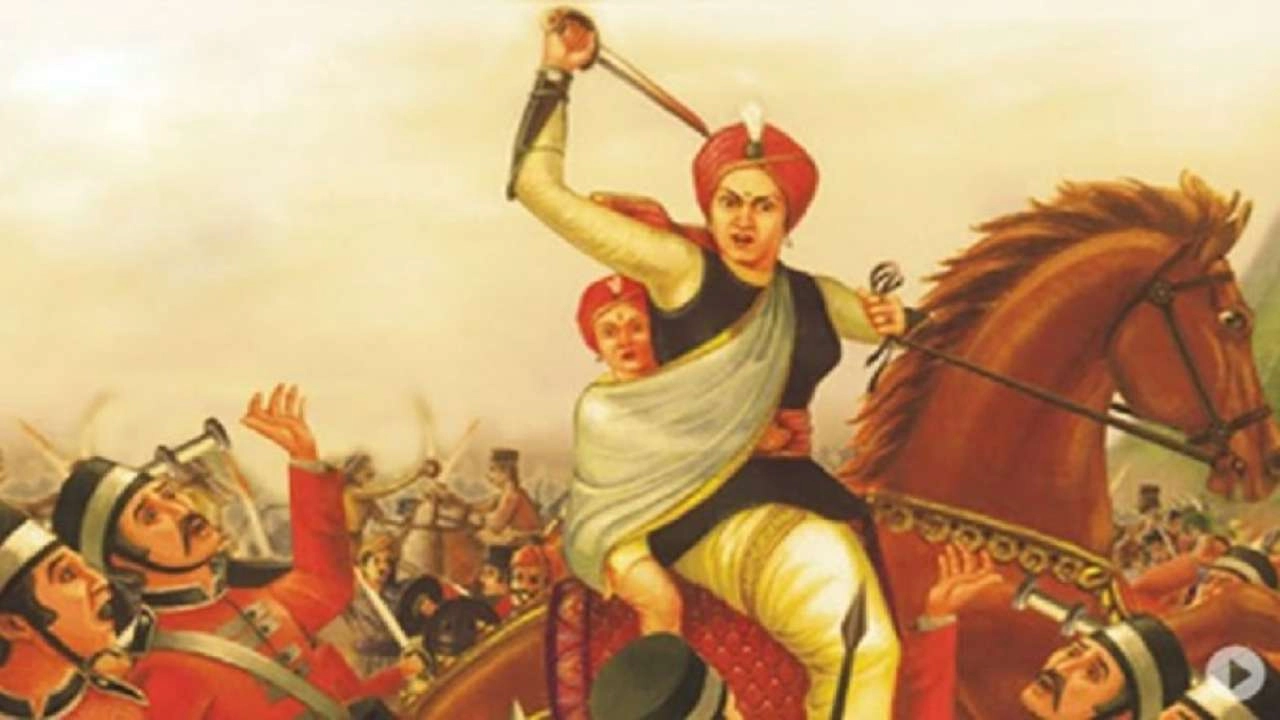Important Facts For Prelims
Rani Lakshmibai
- 21 Nov 2022
- 3 min read
Why in News?
Recently, the Prime Minister of India visited Jhansi on the eve of Rani Lakshmibai’s birth anniversary.
Who was Rani Lakshmibai?
- About:
- Rani Lakshmibai is also known as Jhansi Ki Rani.
- She was the queen of the Maratha-ruled princely state of Jhansi.
- She was one of the leading figures of the Indian Revolt of 1857.
- She’s seen as a symbol of resistance to British rule in India.
- Early Life:
- She was born on 19th November 1828 in Varanasi, Uttar Pradesh.
- She was originally named Manikarnika.
- While pursuing studies, she also took formal training in martial arts, which included horse riding, shooting and fencing.
- Manu’s companions included Nana Sahib (the adopted son of the Peshwa) and Tatya Tope.
- Manu as Jhansi Ki Rani:
- At the age of 14, Manu got married to the Maharaja of Jhansi, Gangadhar Rao Newalkar, whose first wife had passed away before having a child and who was trying to have an heir to succeed him at the throne.
- Hence, Manikarnika became Laxmibai, Rani of Jhansi.
- Rani Lakshmibai gave birth to a son in who died after just three months of birth. The couple later adopted a son, Damodar Rao, from Gangadhar Rao’s extended family.
- At the age of 14, Manu got married to the Maharaja of Jhansi, Gangadhar Rao Newalkar, whose first wife had passed away before having a child and who was trying to have an heir to succeed him at the throne.
- Role in Struggle for Independence:
- Rani Lakshmibai was one of the brave warriors of India's struggle for Independence.
- In 1853, when the Maharaja of Jhansi died, Lord Dalhousie refused to acknowledge the (adopted) child and applied the Doctrine of Lapse, and annexed the state.
- Rani Lakshmibai fought bravely against the British so as to save her empire from annexation.
- She died fighting on the battlefield on 17th June 1858.
- When the Indian National Army started its first female unit (in 1943), it was named after the valiant queen of Jhansi.
What was the Doctrine of Lapse?
- It was an annexation policy followed widely by Lord Dalhousie when he was India's Governor-General from 1848 to 1856.
- According to this, any princely state that was under the direct or indirect control of the East India Company where the ruler did not have a legal male heir would be annexed by the company.
- As per this, any adopted son of the Indian ruler could not be proclaimed as heir to the kingdom.
- By applying the doctrine of lapse, Dalhousie annexed the States of:
- Satara (1848 A.D.),
- Jaitpur, and Sambalpur (1849 A.D.),
- Baghat (1850 A.D.),
- Udaipur (1852 A.D.),
- Jhansi (1853 A.D.), and
- Nagpur (1854 A.D.)





